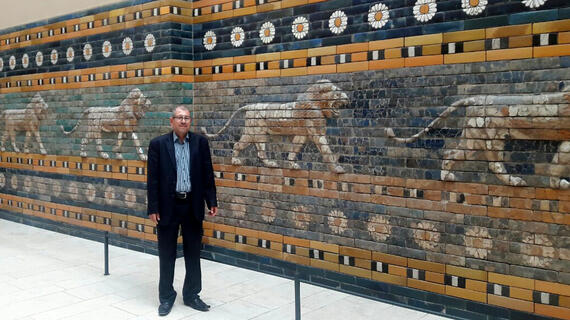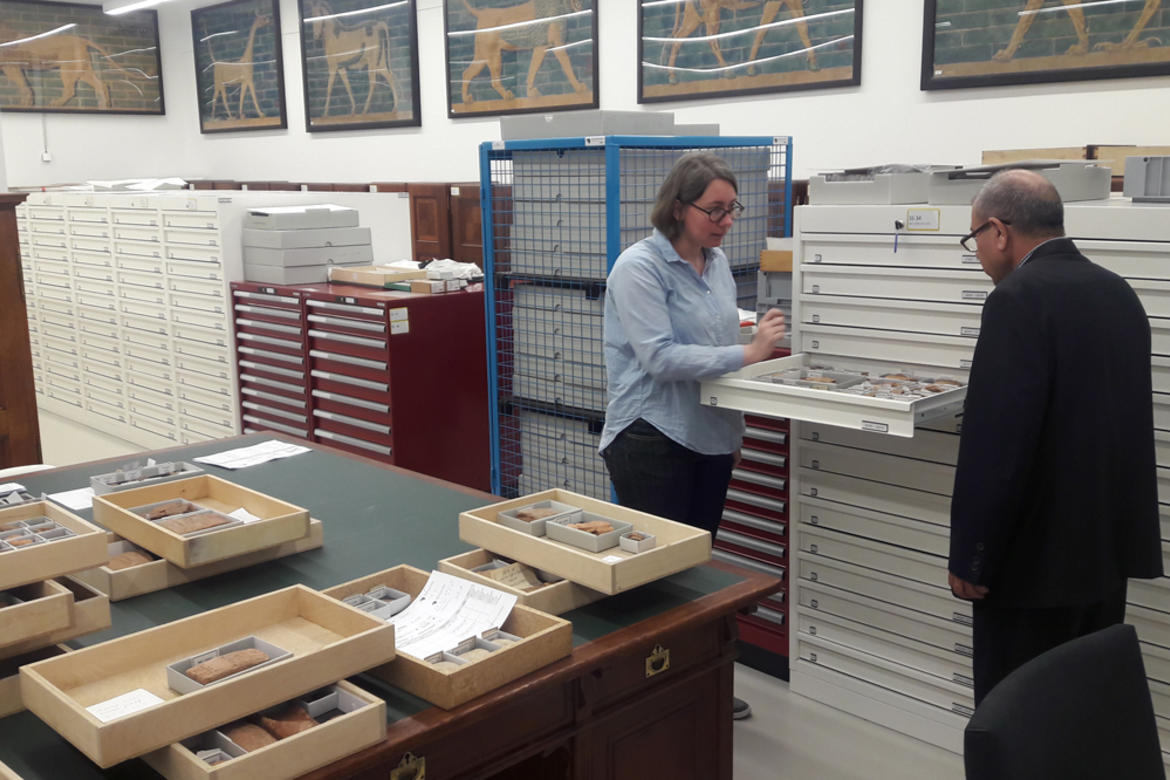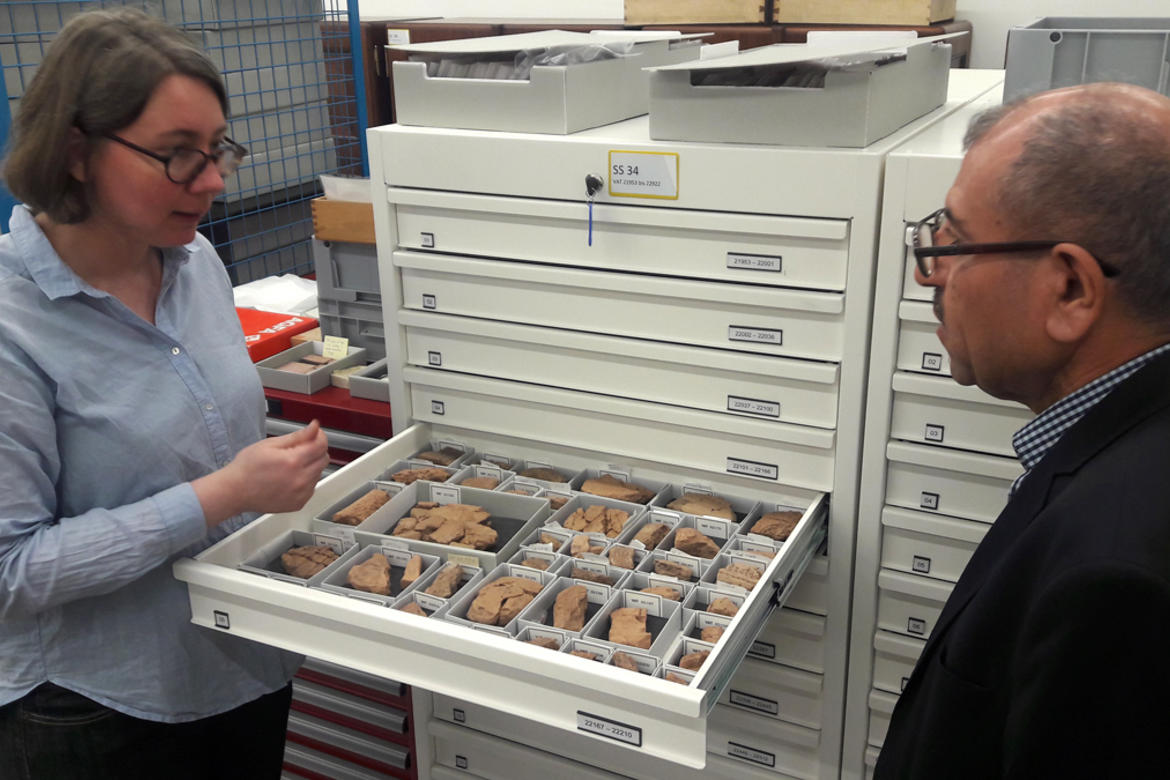The Puzzle Pieces of Archaeology

In the summer of 2016, WMF supported Iraqi archaeologist Hadi Gatea Mosa on a research trip to Berlin. While there, Mosa researched archival documentation of the Ishtar Gate, a structure that was originally constructed in the sixth century BC as one of a series of grand entrances leading into the ancient city of Babylon. Mosa also visited the Vorderasiatisches Museum, Staatliche Museen zu Berlin in the Pergamon Museum to investigate the reconstruction of the gate that is housed there.
Since its original construction in the time of King Nebuchadnezzar II, the Ishtar Gate was rebuilt numerous times, each layer built on top of the next. The colored brick fragments in Berlin, found in rubble and fill that were above the gate still standing, were excavated by German archaeologist Robert Koldewey in the early twentieth century. The unglazed, uncolored lower levels of the gate, still in-situ at Babylon and the object of a WMF conservation project, predate those fragments.
............................
Upon seeing the stunning Ishtar Gate fragments at the Vorderasiatisches Museum display in Berlin, I proclaimed to WMF Program Director Jeff Allen, “Today I am reborn!”
For the past thirty years, while working at Babylon as an archaeologist, I have dreamed of seeing the “other” Ishtar Gate in Berlin. This summer, my dream became a reality. World Monuments Fund supported my visit to Berlin as part of the ongoing collaborative work with the Iraq State Board of Antiquities at Ishtar Gate, the current focus of the Future of Babylon project funded by the US Embassy in Baghdad.
In Berlin, I researched photo archives related to Robert Koldewey, a German architect and self-trained archaeologist who conducted excavations at Babylon from 1899 to 1917. As we begin conservation work on the Ishtar Gate still standing at Babylon, we need to understand everything we can about its original condition—a condition documented by Koldewey—because it aids in determining how the gate has changed in the hundred and some odd years since its discovery, and what we need to do next. Over time, many alterations have been made to the gate, the most drastic during the time Saddam Hussein was in power. These changes have transformed the monument in ways that, today, are causing damage.
At the Vorderasiatisches Museum, I met with the museum director Dr. Markus Hilgert, who arranged a tour of the museum’s state-of-the-art storage magazines, where each piece of the collection is carefully protected. After showing me the Babylon artifact collection, Dr. Helene Gries, a fellow archaeologist, led me through the museum galleries, where I stood face-to-face with the reconstructed Ishtar Gate fragments. More than a decade was needed to assemble the colorful glazed brick fragments—archaeological puzzle pieces—in the museum’s basement before installation.
Gazing at the towering version of the Ishtar Gate assembled in front of me, I imagined what it must have been like in the days of Nebuchadnezzar II as he passed through its archway. I also imagined what Robert Koldewey must have first thought when he discovered the gate’s thousands of colorful pieces lying in the dirt, and what he must have felt when his team started digging further, to find beneath those pieces the intact remains of the Ishtar Gate, the object of our current conservation work, that still stands at Babylon.


